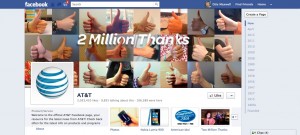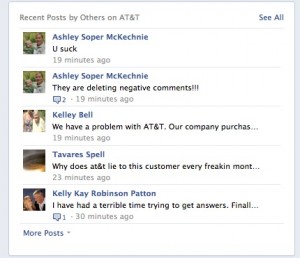
The Wall Street Journal article on GM pulling its Facebook advertising mentioned that General Motors is third in U.S. advertising spending, behind P&G and AT&T. This prompted me to go take a look at what the other two companies are doing with their Facebook presence.
P&G does not appear to have a corporate Facebook page. That is, if you search “P&G” or “PG” or “Proctor & Gamble” you’ll come up empty except for some odd special-purpose pages. Makes sense because P&G does not generally market itself as a brand but rather as a family of brands, each of which has its own brand manager. And indeed a random search turned up pages for Charmin which offers “SitOrSquat”, an app for finding clean public restrooms, and “Charmin Fan Perks” which are cents-off coupons available in limited quantities at preannounced times (generated repeated visits to the site).
There’s no brand page for Prilosec, another random choice, but there’s one for Pringles. Here you can find the “Tournament of Flavors”, a collection of fan-submitted videos, and “Make Us Laugh”, a joke contest which seems to be in Arabic. In short, P&G’s brand managers seem to have figured out how to use Facebook in a way that is appropriate to the medium and encourages user involvement.

ATT, on the other hand, makes GM look like a social media maven. Their page is all over the fact they’ve gotten two million “likes” (Pringles has 19 million) with a big “two million thank yous” graphic at the top and a “two million thanks” link just below this. (The link actually leads to something interesting: on May 22 the ATT “house band” is going to start pumping out “thank you” songs written for people who sign up and submit personal information to be used in writing the lyrics. Sort of like the Old Spice Man.) Yet the rest of the page is full of gripes from customers about AT&T. They should do something to moderate these, or at least respond to them.
The moral of this story? With three so different approaches to Facebook, by America’s three top advertisers, this is still a very young medium. Or as Clint Eastwood might put it, we’re still waiting for the ball to come down after the opening kickoff.